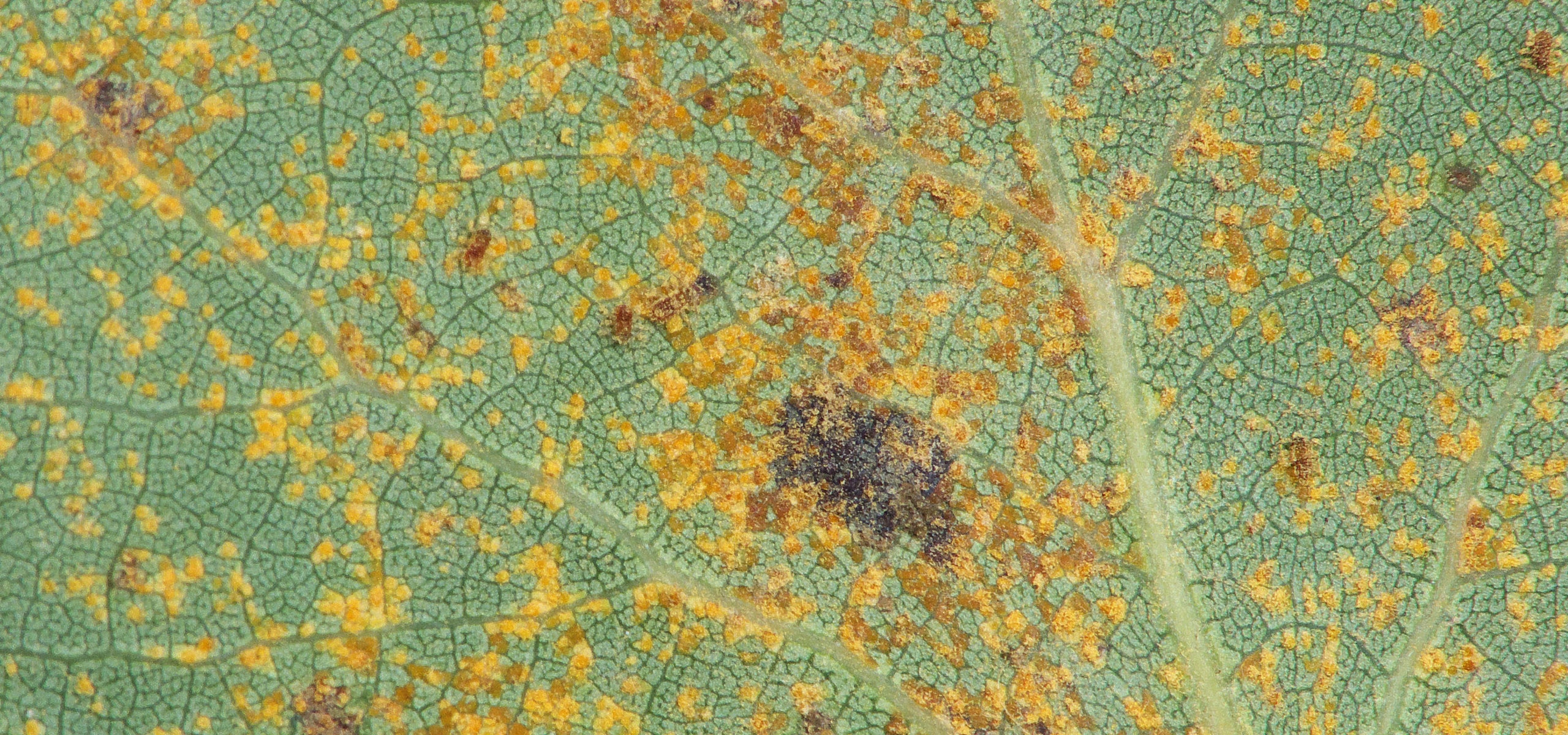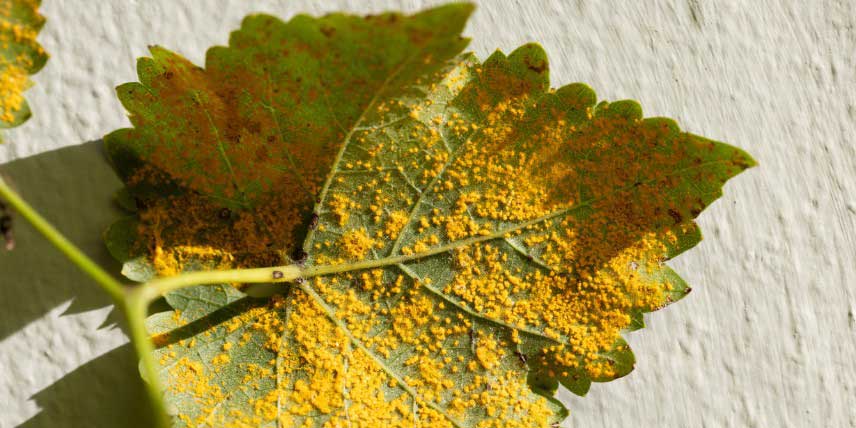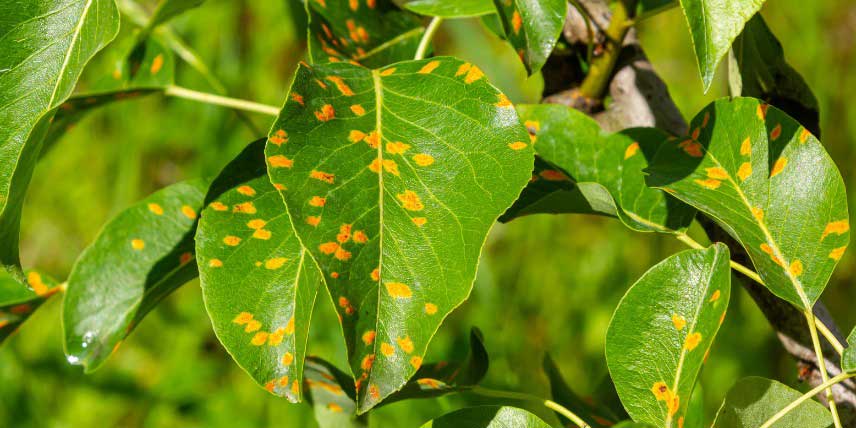
Getting rid of rust disease
What solutions are there to remedy this?
Contents
Rust is a fairly common cryptogamic disease caused by microscopic fungi. It can affect a wide range of plants: flowering ornamental plants (roses, hollyhocks, hyacinths, geraniums, chrysanthemums…), vegetables (garlic, potatoes, beans…), fruit trees (plum, pear…), currant bushes, or conifers.
These fungi spread in spring when temperatures become mild. They are favoured by a combination of heat and humidity, and a confined environment (similar to powdery mildew at the end of summer). The fungus develops on a plant and then releases a multitude of spores that can reach other plants, dispersing with the wind or through simple contact.
What are the symptoms?
When a plant is affected by rust disease, discoloured spots appear on the upper side of the leaves, as well as orange or brown pustules (hence the name rust) on the underside and on the herbaceous stems. These can take on different colours depending on the affected plants. These spots darken by the end of summer and in autumn. Often, the leaves eventually fall off.
The pustules will release spores, leading to the spread of these fungi.
Rust weakens the plant, resulting in slower growth, limited flowering, and a decrease in fruit production… Not to mention the unsightly appearance of these orange spots. However, it is quite rare for the plant to die from it.

Read also
Getting rid of rust diseaseHow to prevent rust disease?
Some precautions will help you avoid the onset of the disease:
- Avoid placing sensitive plants in a confined and humid area, conditions that are conducive to the development of these fungi.
- Water rather in the morning while avoiding wetting the foliage.
- When pruning, disinfect your tools (pruning shears, shears,…) to prevent transmitting the disease from one plant to another.
- Also try to ventilate as much as possible (for example, if it’s in a greenhouse), and avoid planting too densely.
- Choose vigorous and resistant plants.
- Avoid planting too many plants of the same variety to promote true plant diversity. Different rusts only attack a limited group of plants: rose rust will not affect your mint plants, and vice versa.
Sometimes, rust disappears on its own when the conditions that favour it are no longer present (humidity, heat).

How to treat rust?
If your plants are already affected:
- As soon as you notice the first damaged leaves, remove them to limit the spread of this disease.
- Infusions of horsetail are effective with a treatment every two weeks. You can combine them with nettle liquid fertiliser. These treatments can also be used preventively as they strengthen your plants and make them more resilient.
- Fungicides help to neutralise rust. We recommend using copper-based substances such as Bordeaux mixture, or spraying sulphur.
- Subscribe!
- Contents






























